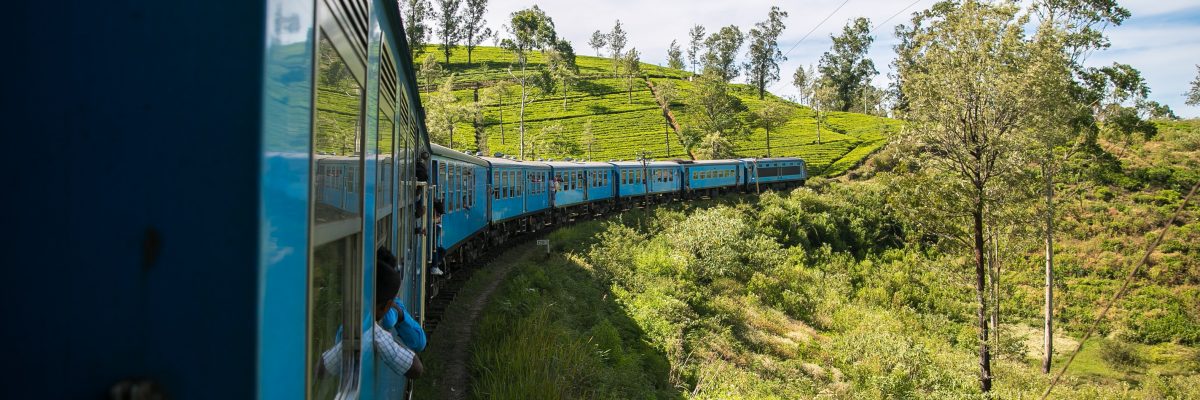Train Spotting: Demystifying 3 common myths about train travel

Trains are slow, expensive and eco-friendly. Are they?
Trains are a greta way to travel, from the Swiss Alps to the Rocky mountains, from the Asia jungle to the African Savana. But we hear fro too ofter the above arguments. So, lets see if they are really true.
Myth 1: Trains are slower
Who said that trains are slow?! This is the argument we often hear about trains compared to flying: “They are slow!” But is this really the case?
If we take into account the time to get to and from the airport, to pass through security, get to and wait at the gate, we might be in for a surprise. Trains make more sense when it comes to travelling from London to Paris, New York to Washington and Tokyo to Kyoto. There is an increasing number of high-speed networks developed in the world which makes train travel as convenient and conformable as flying.
However, there is one aspect of train travel that is overlooked and gradually abandoned. Sleeper trains. An overnight train can be just as fast or even faster than frying into a place and staying at a hotel overnight. Unfortunately, the number of sleeper trains is decreasing steadily, left up to train aficionados and converted into luxury travel, like in the case of the Orient Express.
Myth 2: Trains are more eco-friendly
Do you tagskryt*? There is much talk about train travel being less taxing on the environment. But just how carbon intensive is train travel?
*boasting about traveling by train.
Here are some facts to consider:
- Diesel trains may be just as harmful to the environment as other means of transport, in particular cars, bus, etc.
- Electrical train’s emissions very depending on the county’s energy source.
- Electricity emission vary from 20g CO2/kWh in Iceland and Norway to 900g CO2/kWh in India and South Africa
Many variables are considered when calculating emissions per passenger but the general consensus is that trains can save from 50 to 90% of emissions compared to flying. This is a huge gap.
So yes, train travel is less carbon intensive. Also note that the average occupancy rate of trains is 40%. So the more we are to travel by train the lower the emissions per passenger.
Myth 3: Trains are more expensive
But still many people face a dilemma: train or plane?
This is the recurrent debate. Time and again we hear that flying is cheaper and faster. Sadly price difference is an important factor. As long as a return short haul flights cost less than the price of lunch, trains don’t stand a chance.
To run any means of transport you need 3 things:
- Vehicle (bicycle, car, train, plane, boat, etc)
- Path (road, railway track, air-space, waterway, etc)
- Reference points (airport, train station, port, etc)
In the case of trains, it is not so simple. All of the above together are called railway infrastructure. This infrastructure is extremely costly to build and maintain and is government or privately owned.
There are many example where running trains is not economically viable and the infrastructure is left to degrade, like in the case of Vancouver Island in Canada. In other cases, the railroad tracks are just overtaken by urbanization, like in the case of Bangkok, Hanoi, etc. We may boast about taking trains and write about how great they are for the environment; however, the sad reality is that the majority of us do not support the railroad infrastructure as much as we should.
The average occupancy rate of trains is 40%. Basically, 1 in 2 trains are running empty!!!! We have a long way to go to make trains our preferred mode of transport and contribute to keeping up and developing railway infrastructure.
3 tips on how to make the most of trains
- Look at trains as part of the trip and not as a means of transport. Often trains offer scenic route that cannot be seen from a plane or a car.
- Book your tickets in advance, you might get tickets for nearly the same price as flights or buses
- Check what is the primary energy source in the county and what trains run on, this will affect greatly emissions.
Greener Mobility
Climate and the impact of travel on climate is one of our guiding principles, +principle 7. It is by far one of the most controversial issues when it comes to travel. And there is no black or white answer. This article is part of on series dedicated to GREENER MOBILITY. We will share stories, figures and will try to demystify the impact of transport on travel. We hope to steer a discussion and come up with practical tips to help confused, and maybe even guilty, travelers.
